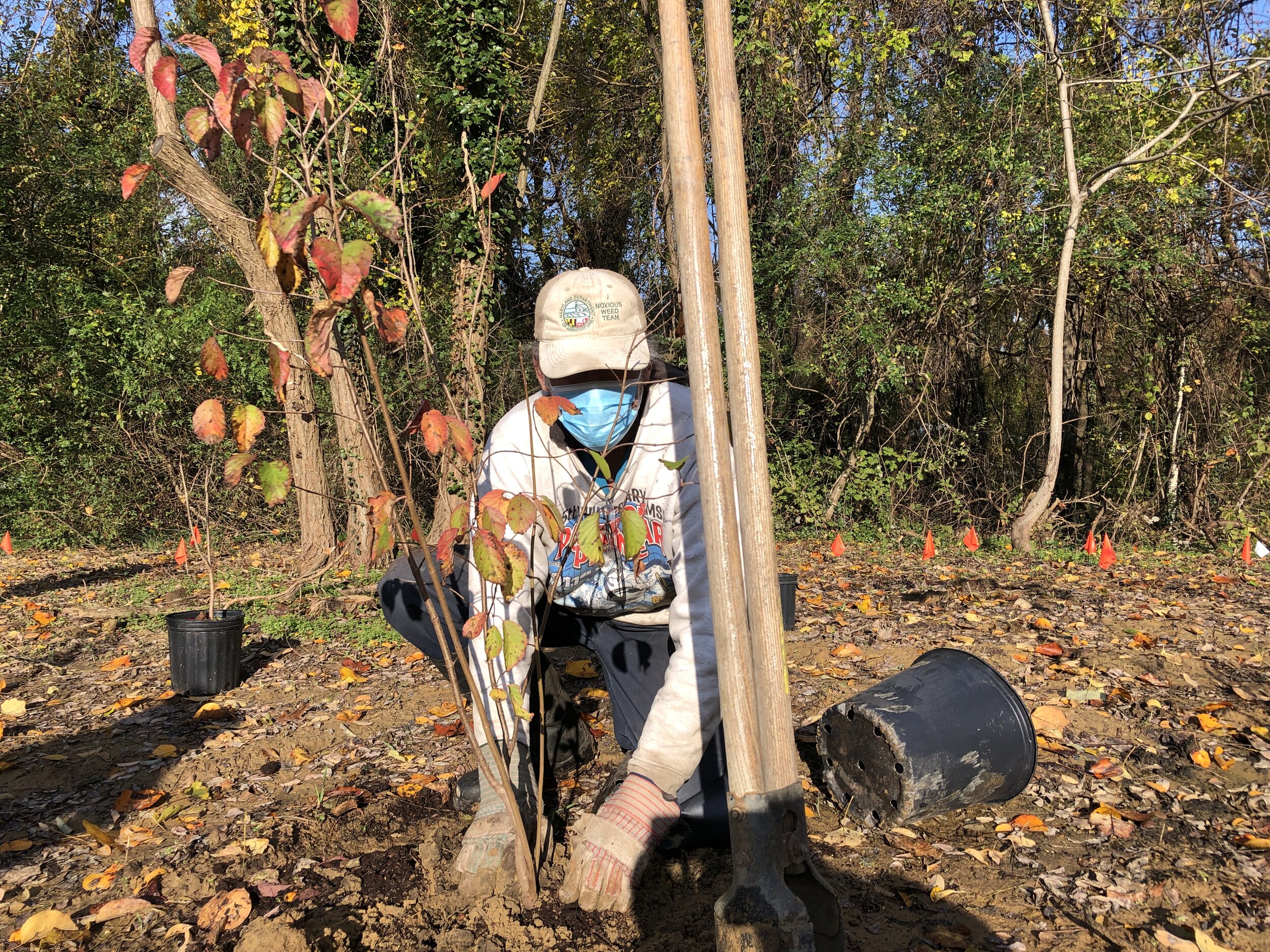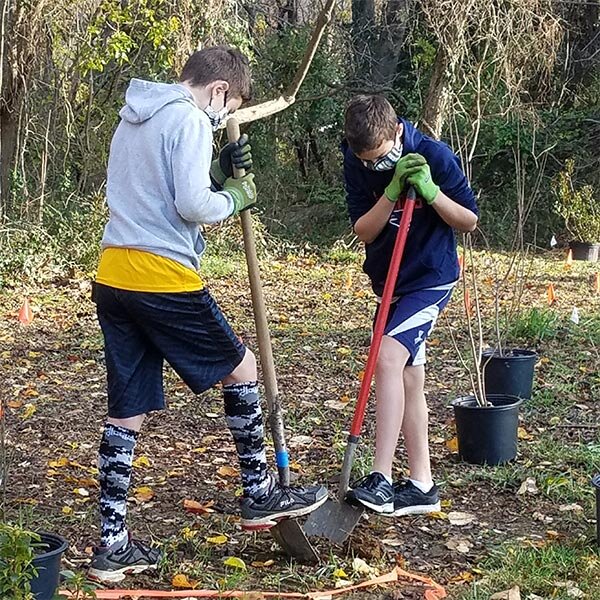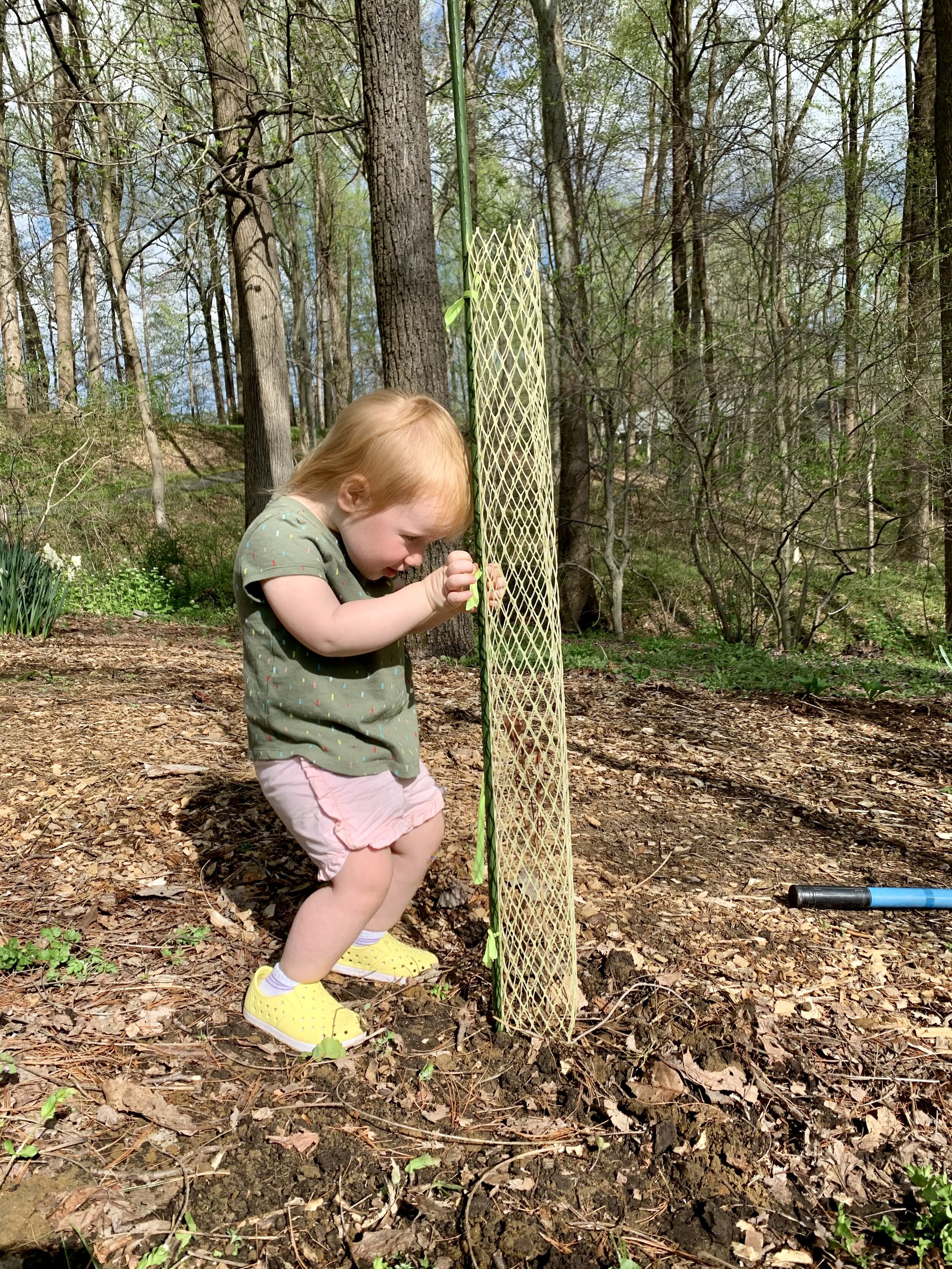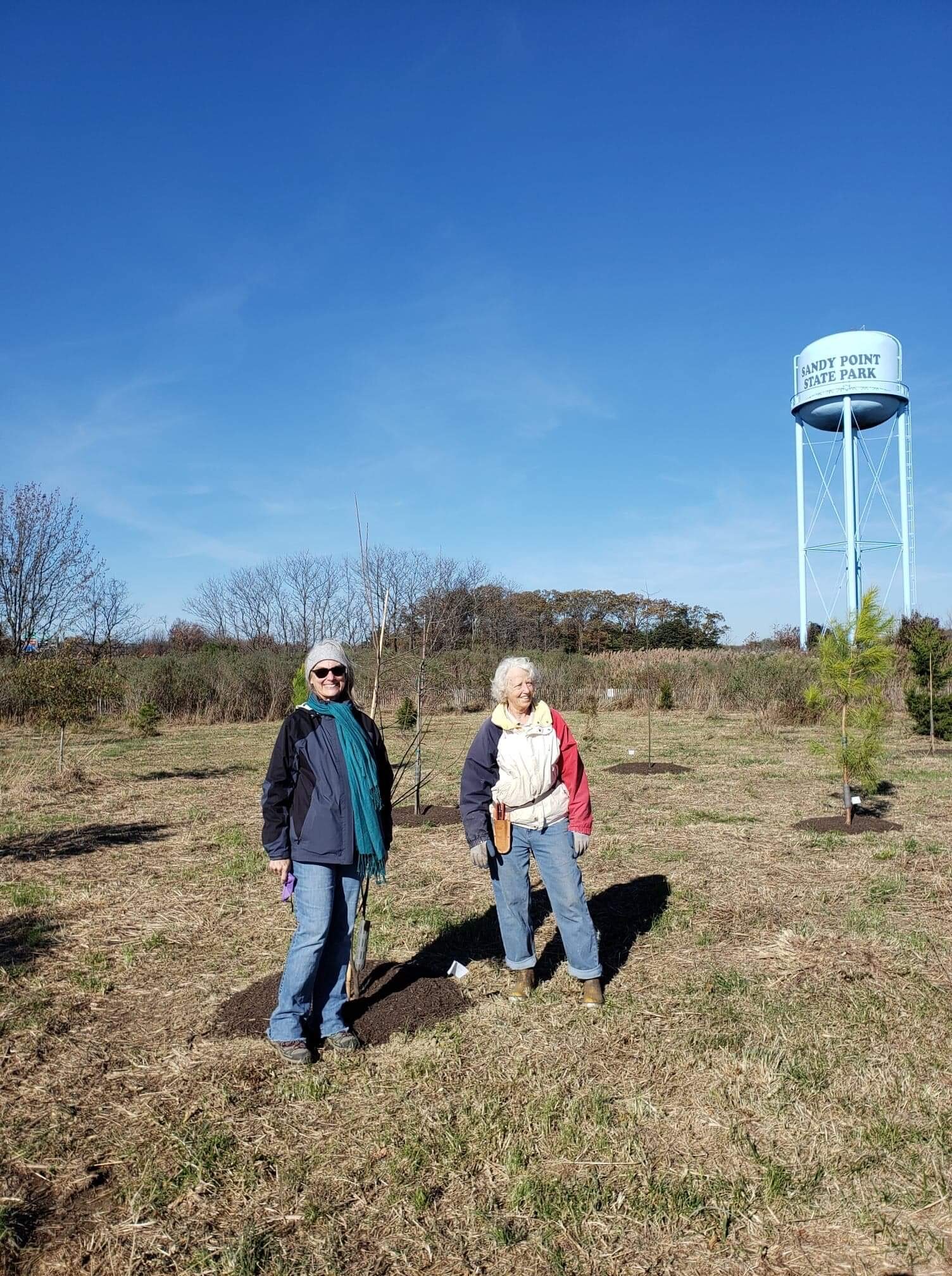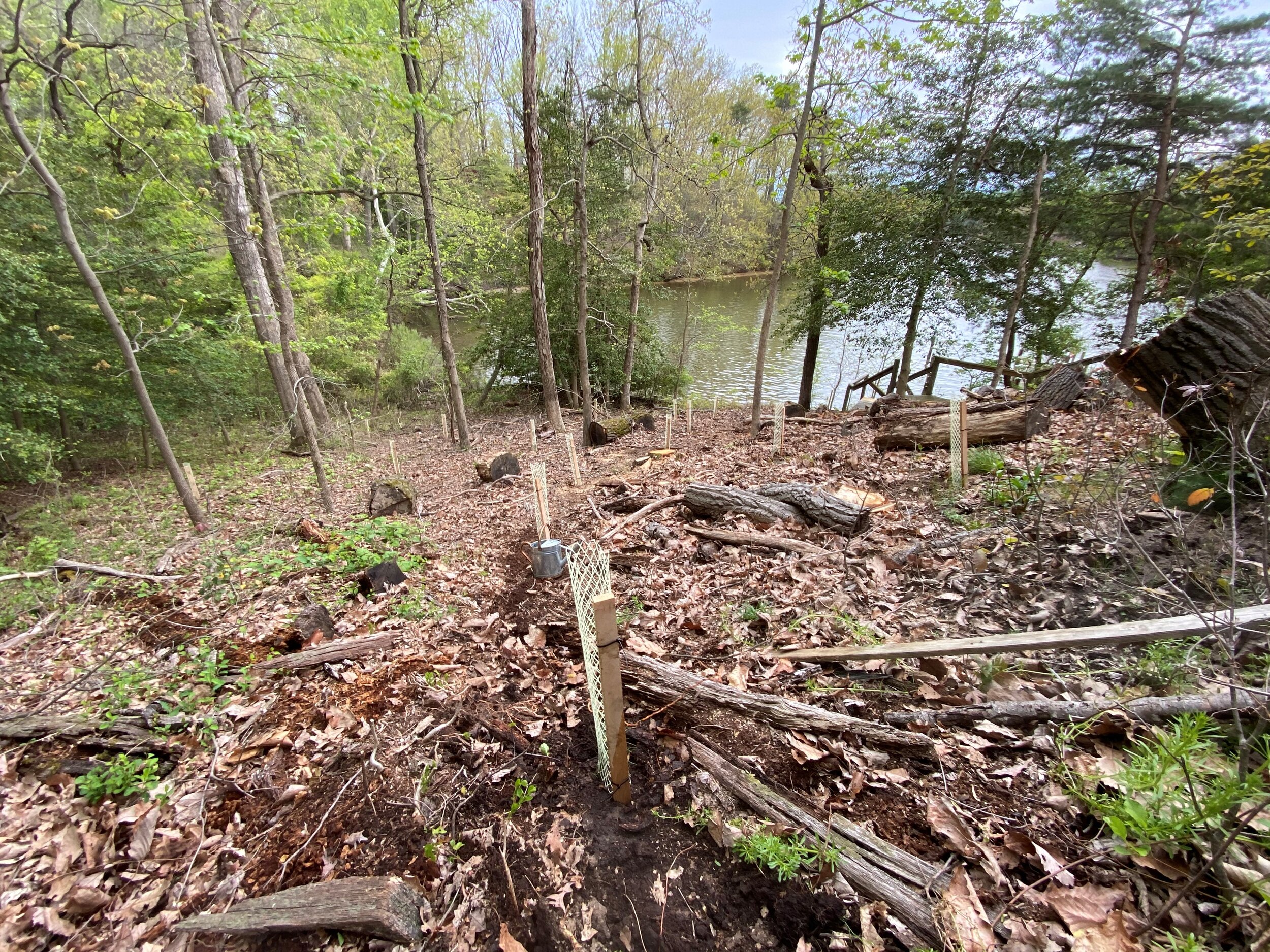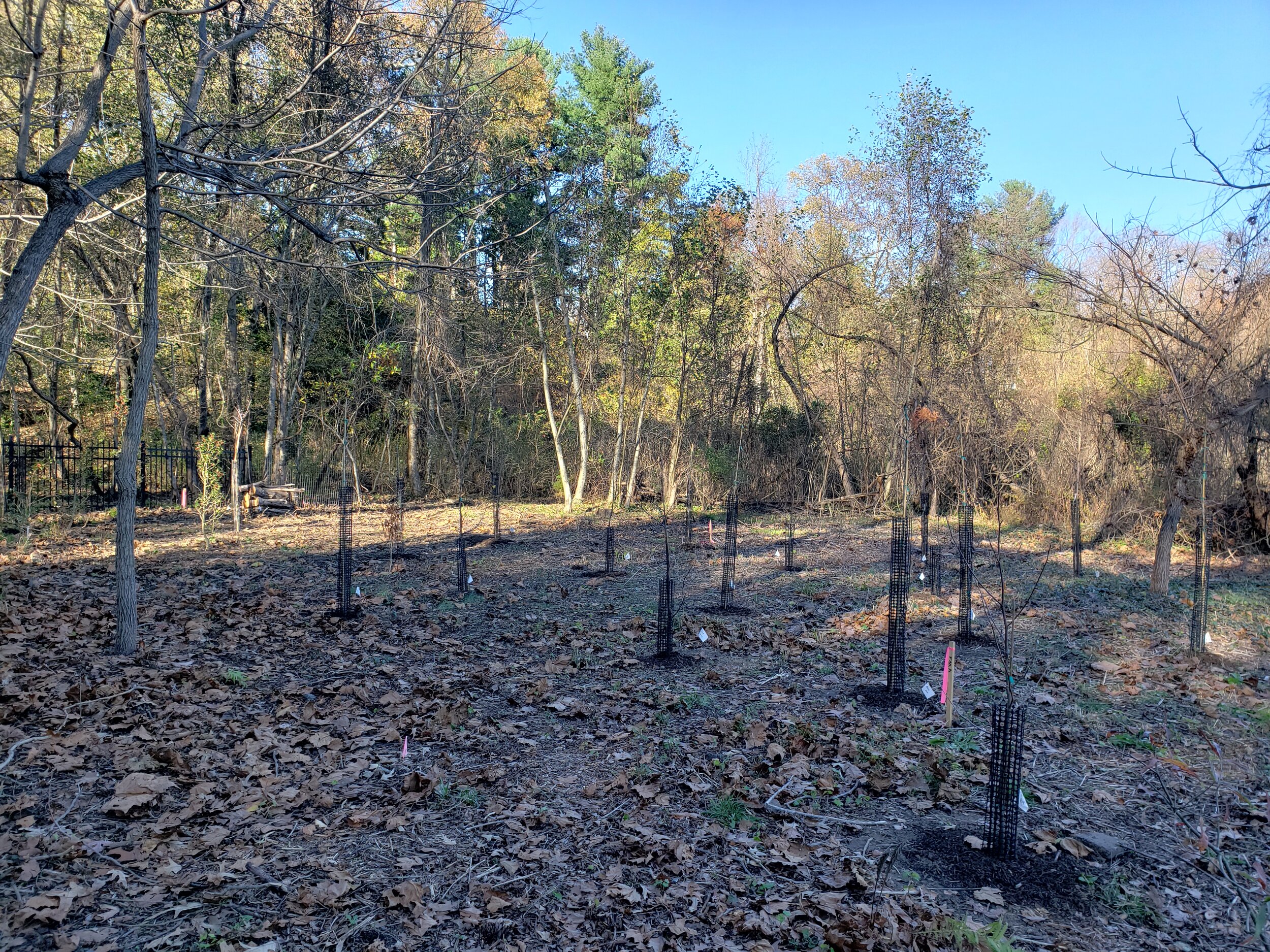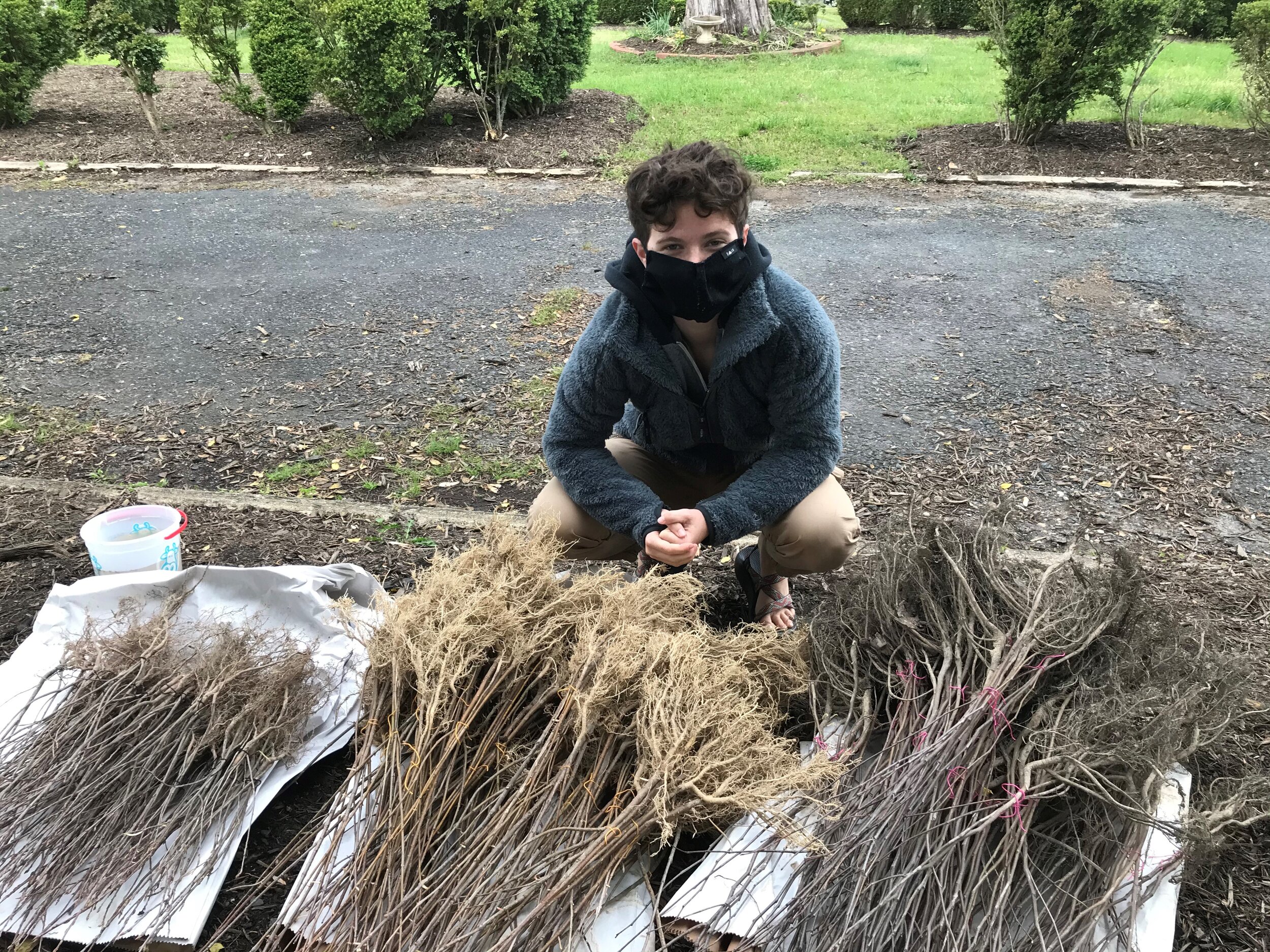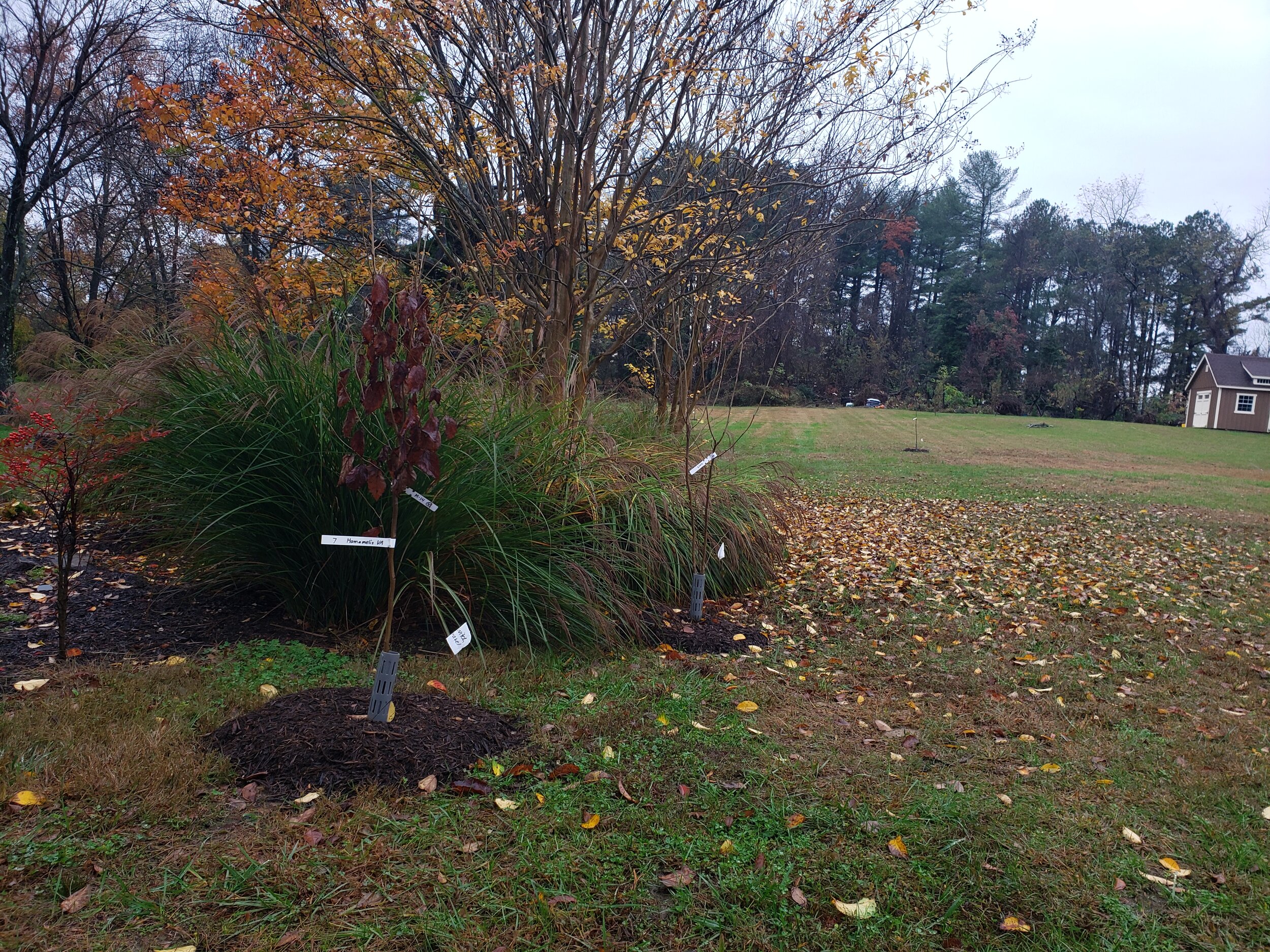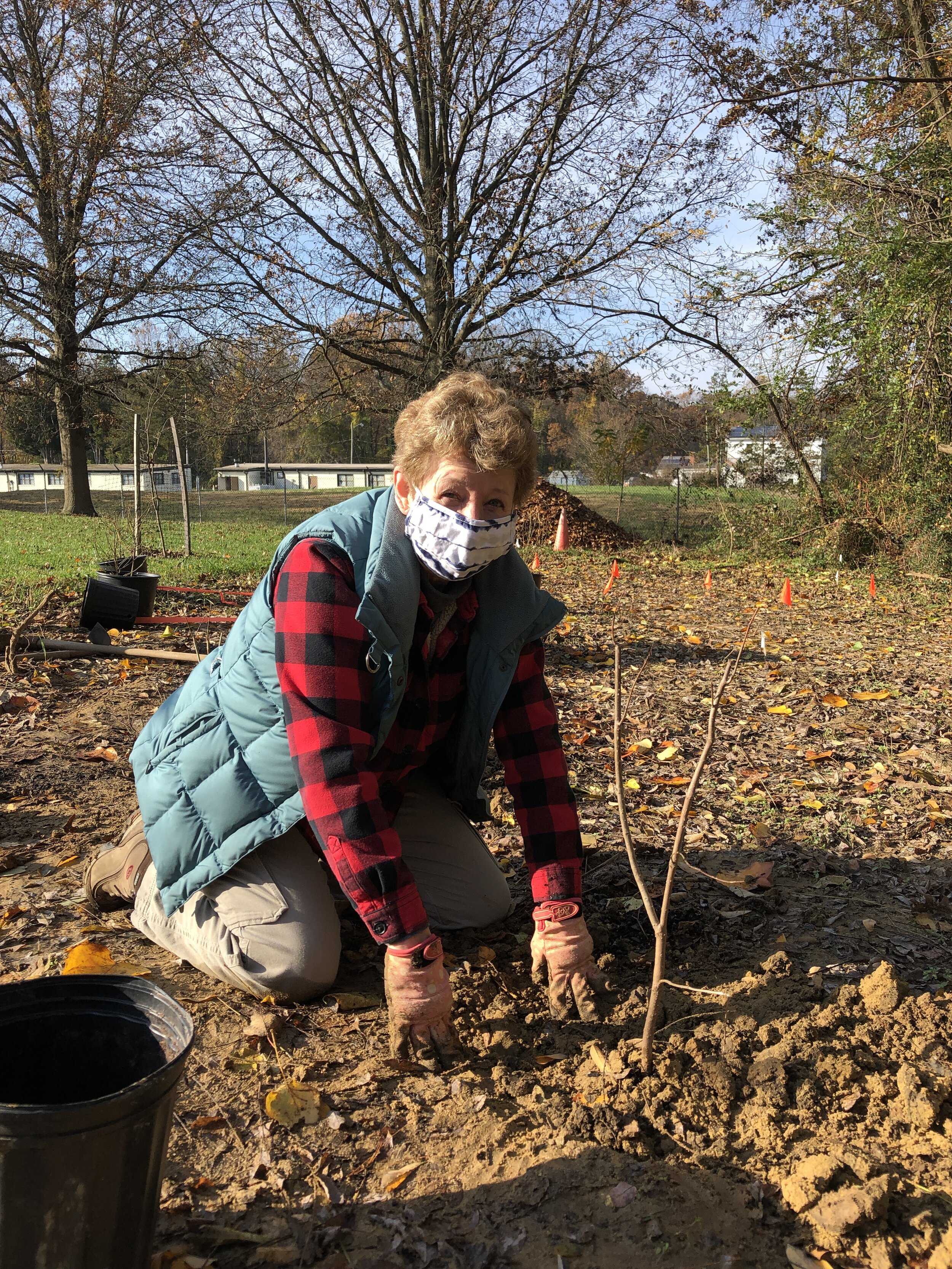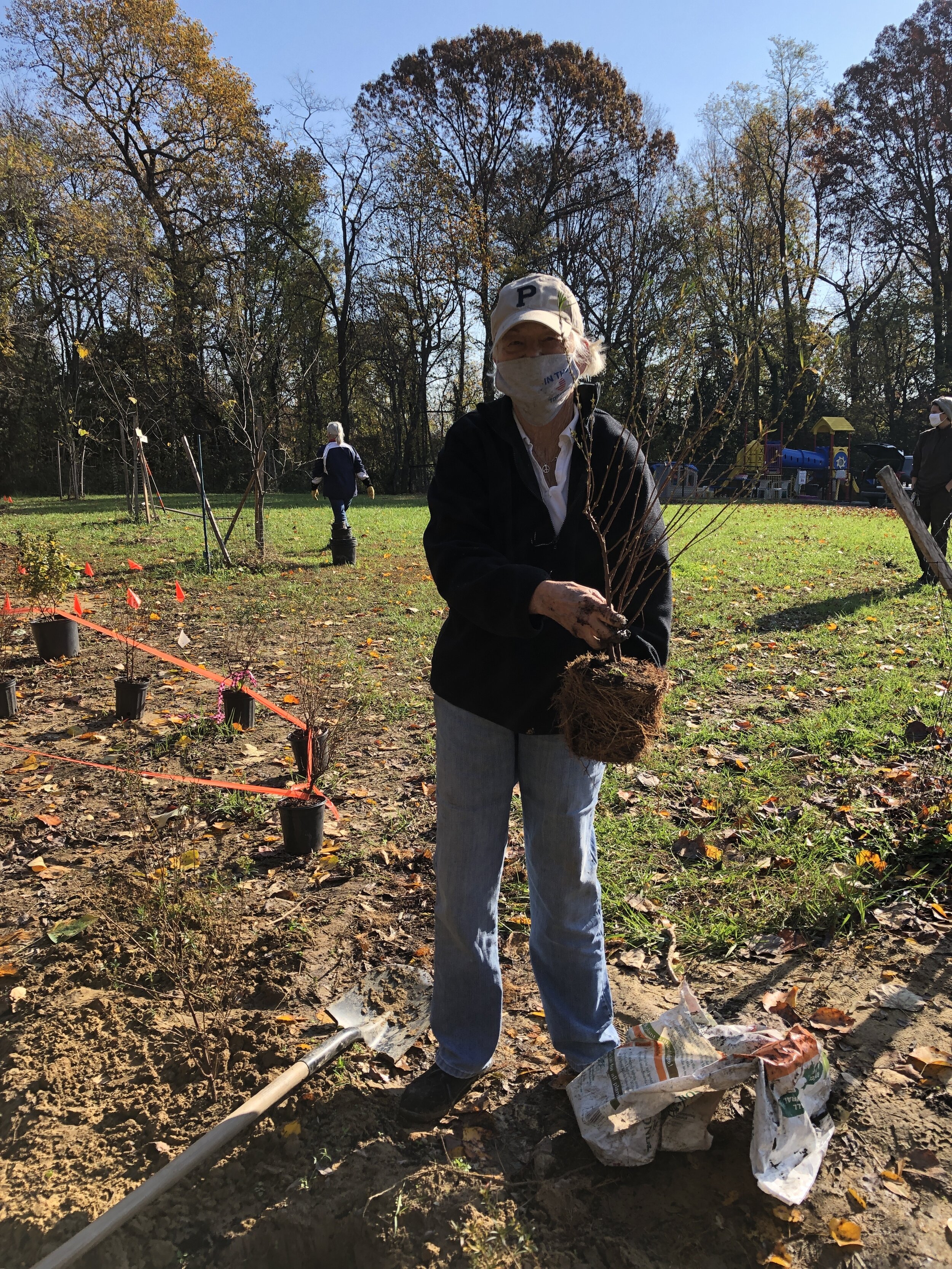As we begin the second year of Replant Anne Arundel, we reflect on the many successes and look forward to amplifying our impact in 2021.
Having lost over 2,500 acres of forests in recent years, local residents came together to Replant Anne Arundel in 2020, adding almost 5,000 native trees to our landscape. A partnership of Anne Arundel County, Maryland Department of Natural Resources, the Helena Foundation, and Alliance for the Chesapeake Bay, led by the Watershed Stewards Academy, Replant Anne Arundel helps local communities restore their lost tree canopy.
Replant by the numbers
In 2020, Replant Anne Arundel:
Trained 44 Tree Troopers
Planted 4,803 trees on 204 project sites
Engaged 304 residents
In 2021, that trend will continue with the planting of more than 5,000 additional trees, 50 new Tree Troopers, and over 1,500 residents engaged. WSA is grateful to the Chaney Foundation who joined the list of Replant funders in 2021.
A new interactive map shows the location of Replant Anne Arundel projects in relation to recent tree canopy loss. You can explore it here.
Tree Troopers…A Force for Good!
In March 2020, WSA piloted the Tree Trooper initiative: a training program, in partnership with the Alliance for the Chesapeake Bay, for community leaders to plan, plant, and maintain trees in their communities. Within five days of opening the registration for Tree Troopers, we received 65 applications, representing 55 residential communities and nine congregations!
A second group of Tree Troopers began training in March 2021, and additional opportunities to join this corps will be available later this year. Interested? Please complete the Replant Interest Form!
“I love being part of something that will outlast my time on the earth by many decades. In the meantime, I hope to breathe the oxygen and sit under the shade of these trees.”
Ensuring Equity
As we reflected on the outcomes of our inaugural year, we recognized that Replant Anne Arundel did not reach all communities equitably. In the coming year, we aim to better understand and respond to the needs of communities that are not receiving trees. As our staff and Board engaged in targeted learning on diversity, equity, inclusion and justice (DEIJ), we heard from underrepresented partners of color specifically about Replant Anne Arundel and understood that the “engagement” that some of these diverse audiences seek is closely connected with economic development.
This realization led us to focus on contractors whose racial and ethnic demographics align with those of the communities with whom we hope to 1) strengthen our existing relationships, and 2) build new partnerships. We recognize that our attempts to connect must honor the needs these communities have highlighted for us, and it is our sincere hope that a new engagement strategy will result in more people of color receiving trees and more underrepresented communities engaging in action for a cleaner watershed.
Continuing our efforts- for all
In the first year of Replant, efforts were made to reach underrepresented constituents, with a WSA volunteer spearheading an effort to engage black contractors and communities, and staff conducting listening sessions to better understand the needs of different targeted groups. Thanks to a partnership with Kenyatta Rowel, several POC-owned companies with the skills to plant trees for Replant were identified and provided assistance to bid on and be awarded contracts to execute large-scale tree plantings. WSA continues to work with Kenyatta to identify additional opportunities to create social equity in contracting for green jobs.
Building on this work, we received additional funding to allow us to review our current processes, identify gaps and opportunities specifically for the Replant Anne Arundel Program, and provide recommendations for next steps with diverse audiences. We look forward to engaging every community in Anne Arundel County to drive change for sustainable landscapes and clean waters.
Restoration Professionals - Essential for Success
Randy K. Rowel Jr., XMNR, a Watershed Steward of Class 7 and accomplished environmental professional, works to bring equity in environmental education and restoration. Thanks to a partnership with Mr. Rowel and his grant and proposal writing firm RR & Associates, several Anne Arundel County-based, POC-owned companies were awarded contracts to execute large-scale tree plantings. WSA continues to partner with Mr. Rowel to identify additional opportunities to create social equity in contracting for green jobs.
Building on this work, we received funding to allow us to review our current processes, identify gaps and opportunities specifically for the Replant Anne Arundel Program. We hope this will be one more step toward engaging every community in Anne Arundel County to drive change for sustainable landscapes and clean waters.
WSA is grateful for the support and technical assistance of many other restoration professionals who helped to guide this program.
Grae Brummitt, WSA Restoration Technician, developed the nuts and bolts of this program from the ground up. Grae was instrumental in facilitating the Tree Trooper Training, organizing the Tree Trooper Projects, working with the installation contractors to ensure trees were properly sited and planted. Replant Anne Arundel would not have been the success it has been without Grae.
Josh Clark, WSA Restoration Coordinator, used his CBLP (Chesapeake Bay Landscape Professional) training and Landscape Architecture expertise to ensure maximum ecological and restoration impact of the program.
Justin Arseneault, Project Forester, Forest Service, Maryland Department of Natural Resources, helped facilitate the Backyard Buffers Program, develop the Resilient Tree Species List, and provided programmatic advice.
Craig Highfield, Forests Program Director for the Alliance for the Chesapeake Bay, instructed much of the Tree Trooper training, imparting his vast tree knowledge to the new volunteers.
Brittany Hass, MD Forests Projects Coordinator for the Alliance for the Chesapeake Bay, helped instruct the Tree Trooper training, bringing a wealth of practical experience to our volunteers.
Matt Johnston, Anne Arundel County Environmental Policy Director, provided visionary leadership to make this program a reality.
Erik Michelsen, Deputy Director, Bureau of Watershed Protection and Restoration Program, and his talented team guided this program toward maximum water quality benefits and are creating a new app to capture project data.
Bud Reaves, Anne Arundel County Forester, helped to develop the Resilient Tree Species List and provided programmatic advice.

